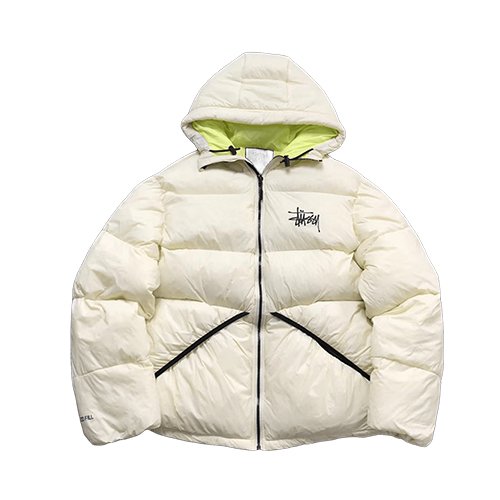The Rise of Stüssy A Streetwear Icon Through the Decades
Shop your favorite Stussy Clothing collection at a promotional price Get 30% off and fast shipping Shop now

In the early 1980s, a modest surfboard shaper from Laguna Beach, California, named Shawn Stüssy, embarked on a journey that would inadvertently revolutionize the fashion industry. What began as a local surfboard business evolved into Stüssy, a brand that seamlessly blended surf, skate, punk, and hip-hop cultures, laying the foundation for what we now recognize as streetwear. This article delves into the rise of Stüssy, exploring its origins, cultural impact, and enduring legacy.
Origins: From Surfboards to Streetwear
Shawn Stüssy's foray into the fashion world was unintentional. In the late 1970s, he crafted custom surfboards, adorning them with a distinctive signature logo—a stylized rendition of his surname. To promote his surfboards, he began printing the same signature on T-shirts and selling them locally. These T-shirts gained popularity among surfers and skaters in Laguna Beach, marking the nascent stages of the Stüssy brand.
Expansion and the International Stüssy Tribe
Recognizing the growing demand for his apparel, Shawn Stüssy partnered with Frank Sinatra Jr. (unrelated to the singer) in 1984 to formalize the clothing line. This partnership facilitated the brand's expansion beyond local markets. Shawn's travels to fashion hubs like London, Paris, and Tokyo led to connections with like-minded individuals who shared an appreciation for the fusion of music, fashion, and culture. This collective, known as the "International Stüssy Tribe," played a pivotal role in disseminating the brand's ethos globally.
Cultural Fusion and Design Aesthetics
Stüssy's designs were a melting pot of cultural influences. The brand drew inspiration from reggae, punk, new wave music, and high fashion, creating a unique aesthetic that resonated with diverse subcultures. Notably, Stüssy was among the first to produce caps marked with branding for fashion rather than sports teams, setting a trend that would become ubiquitous in streetwear.
Global Expansion and Collaborations
The 1990s marked a period of significant growth for Stüssy. The brand opened flagship stores in major cities worldwide, including New York, Tokyo, and London. Collaborations with artists and designers, such as James Jebbia (founder of Supreme) and Futura, resulted in limited-edition clothing and accessories that further cemented Stüssy's status in the fashion world.
Stüssy and Skate Culture
Stüssy's connection to skate culture has been integral to its identity. In the 1980s, the brand's distinctive logo and relaxed, California-inspired aesthetic resonated with skateboarders. Collaborations with influential skate photographers and videographers, including Glen E. Friedman and Craig Stecyk, helped to cement the brand's position within the skate community. In the 1990s, Stüssy continued to be a major player in skate culture, working with a collection of influential skateboarders including Keith Hufnagel (Huf founder), Scott Johnston (adidas Design Director), Lance Mountain (Nike SB), and James Jebbia (Supreme founder).
The Legacy of Stüssy
Today, Stüssy stands as a testament to the enduring appeal of authentic, culturally resonant fashion. The brand's ability to adapt while staying true to its roots has allowed it to remain relevant in an ever-evolving industry. By embracing a diverse range of influences and fostering collaborations, Stüssy has not only survived but thrived, influencing new generations of streetwear enthusiasts.
Conclusion
The rise of Stüssy from a small surfboard operation to a global streetwear icon underscores the power of cultural fusion and authenticity in fashion. By tapping into the zeitgeist of various subcultures and maintaining a commitment to quality and creativity, Stüssy has secured its place as a pioneer in the streetwear movement—a legacy that continues to inspire and influence the fashion landscape today.
What's Your Reaction?














.jpg)
.jpg)

